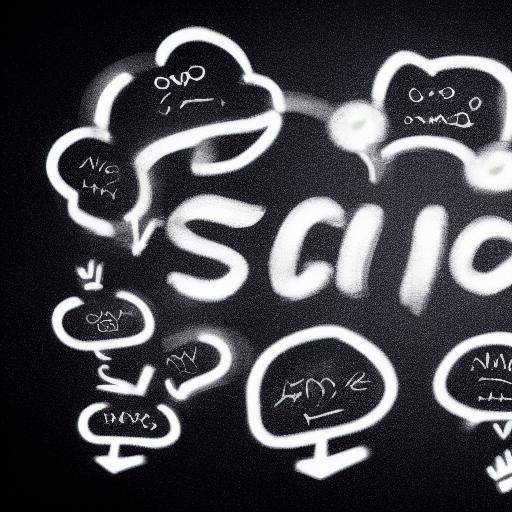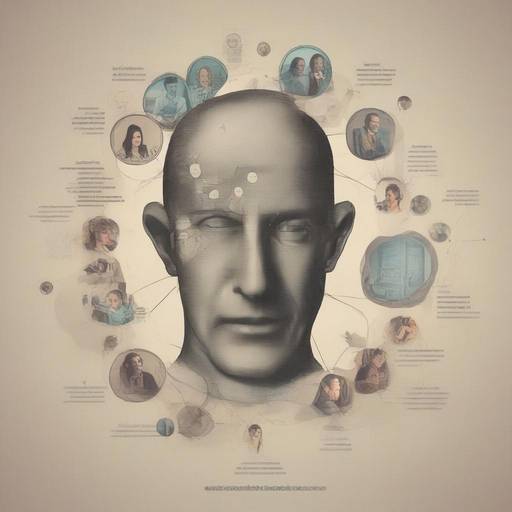
Recognition, within the system of rewards, plays a fundamental role in the motivation and performance of individuals in any workplace. Understanding its importance, benefits, challenges and applications, as well as its relationship with motivation, is crucial for the success of companies and the well-being of their workers. In this article, we will explore in detail the relevance of recognition in the reward system, its historical evolution, deep analysis, practical advice, industry perspectives and actual case studies, together with future predictions. We will also address frequent questions on this issue.
Introduction
Recognition, as an essential part of the reward systems, plays a key role in the motivation and satisfaction of the individuals. It is a determining factor in fostering a positive and productive working environment. In this article, we will analyze in depth the importance of recognition within the system of rewards, its evolution throughout history, the benefits it brings, challenges it poses, experiences in different industries and future predictions. In addition, we will answer the most common questions about this topic to provide an integral vision.
History and Background
Recognition in the system of rewards has its roots in human needs of appreciation and valuation. Throughout history, its role has evolved from symbolic gestures to structured and personalized recognition programs. Understanding its historical development allows us to appreciate its current importance and anticipate its future.
In the 19th century, during the Industrial Revolution, the first approaches to recognition focused on monetary remuneration as a symbol of value of work. However, with the advent of theories of motivation and organizational psychology in the twentieth century, more innovative and effective forms of recognition began to be explored. At present, recognition goes beyond economics, covering emotional, social and professional aspects.
Historical developments
The evolution of recognition can be divided into several significant stages that reflect changes in the perception and application of this concept. From the industrial era to the digital revolution, each stage has influenced the way in which recognition in the labour sphere is understood and implemented.
It was Industrial ( XIX century)
During the industrial era, recognition was manifested mainly through economic remuneration. Workers were valued according to their productivity and efficiency, leading to the emergence of performance-based wage compensation systems.
Theories of Motivation (X XX century)
With the emergence of theories of motivation, such as that of Abraham Maslow and Frederick Herzberg, the importance of recognizing the emotional and psychological needs of the workers began to be perceived. Recognition was extended beyond wages, incorporating aspects such as job satisfaction, professional development and the valuation of individual achievements.
Era Digital (21st Century)
With the arrival of the digital era, the recognition has adapted to the changes in the work landscape. New technologies have allowed the implementation of more flexible and personalized recognition programs, which encourage the active participation of employees and promote the culture of recognition within organizations.
Benefits of Recognition
Effective recognition in the rewards system entails numerous benefits for both employees and organizations. Among the most outstanding benefits are:
- Enhancing commitment and productivity.
- Increased self-esteem and job satisfaction.
- Promoting a positive and collaborative working environment.
- Retention of talent and reduction of absenteeism.
- Stimulation of innovation and exceptional performance.
These benefits demonstrate the positive impact that recognition has on the overall well-being of employees and on the overall performance of the company. By understanding and capitalizing on these benefits, organizations can strengthen their competitive position and business culture.
Challenges and Considerations
Despite the obvious benefits, implementing an effective recognition system is not without challenges. Some of the common challenges facing organizations include:
- Customization: Designing recognition programs that meet the individual needs of employees.
- Equity: Ensure fair and equitable recognition for all team members.
- Sustainability: Maintain long-term recognition programs and avoid complacency.
- Communication: Effectively transmit the value of recognition and its impacts to all levels of the organization.
- Evaluation: Measuring and evaluating the impact of recognition on employee engagement and performance.
In addressing these challenges and considerations proactively, organizations can optimize their recognition programs, ensuring their effectiveness and continued relevance.
Analysis in Deep
Current trends
Current trends in labour recognition focus on personalization, the integration of innovative technology and the inclusion of emotional and social aspects. Recognition programs evolve towards more holistic approaches that seek to address the individual needs of employees, encourage active participation and strengthen emotional connection with the company.
Impact on Motivation
Recognition has a significant impact on employee motivation. By being recognized and valued for their contribution, employees experience an increase in their self-esteem and commitment to the goals of the organization. Effective recognition programmes act as a stimulus for achieving goals, thus promoting a motivating and productive working environment.
Perspectives and Views
Perspectives on recognition in the reward system vary according to experiences, organizational cultures and strategic approaches. While some leaders emphasize the importance of formal recognition and tangible rewards, others support a more informal and personalized appreciation. The diversity of opinions enriches the discussion, showing that there is no unique approach and that adaptability is key to the success of recognition programs.
Comparative analysis
Compare different approaches to recognition, reward systems and their impact on motivation provides a broader and deeper insight into effective practices and areas of improvement. Observing how diverse organizations apply recognition strategies can inspire new ideas and approaches, as well as provide valuable lessons on what works in different contexts.
Full review
Practical Applications
The practical applications of recognition and reward system extend through a wide range of industries and working environments. From multinational corporations to emerging startups, recognition plays a vital role in the retention of talent, the promotion of commitment, the promotion of business culture and the momentum of exceptional performance.
Best Practices
Identifying and sharing best practices in recognition can serve as a reference for organizations seeking to optimize their existing programs or implement new strategies. When studying cases of study and successful experiences, companies can acquire innovative ideas and effective strategies to improve their own recognition programmes.
Industry Perspectives and Expert Reviews
Industry perspectives and expert views on recognition provide valuable insights into current trends, challenges and opportunities. Listening to leaders and professionals with experience in the application of recognition programs in various contexts can help organizations get a deeper understanding of best practices.
Comparative analysis
Comparison between Recognition, Rewards System and Motivation
Recognition, reward system and motivation are closely interconnected in the working environment. While recognition is a fundamental component of the reward system, motivation acts as the driving force behind the commitment and performance of employees. The interaction between these elements is complex and dynamic, and understanding how they influence each other is essential to developing effective talent management strategies.
Examples and Scenarios
Exploring real examples and scenarios where recognition, rewards and motivation have positively impacted labour dynamics provides a practical and tangible understanding of their importance. These examples help illustrate how companies can leverage recognition to stimulate motivation and improve the performance of their employees, generating tangible results in productivity, talent retention and working climate.
Practical Tips and Accessible Recommendations
Effective implementation
In considering the implementation of recognition programmes, it is crucial to take into account practical advice and actionable recommendations that optimize results. From customization to continuous evaluation, having a set of solid practices and key councils can make the difference in the effectiveness and sustainability of recognition programmes.
Step by Step Guides
Providing clear guides and steps for the implementation and management of recognition programmes offers organizations a practical and structured framework for successful implementation. By disaggregating the process in concrete steps, companies can follow a systematic and effective approach to ensure that recognition is a key pillar of their talent management strategy.
Basics and Detailed Justifications
Providing detailed foundations and justifications on the importance of recognition is essential for generating acceptance and commitment both at the senior management level and among employees. By supporting recognition strategies with a strong understanding of their impact and benefits, organizations can establish a solid basis for their long-term implementation and sustainability.
Industry Perspectives and Expert Reviews
Sectoral insights
Exploring industry perspectives on recognition, rewards and motivation provides a global view of emerging trends, challenges and opportunities in different sectors. These sectoral perspectives are key to understanding the applicability and adaptation of recognition strategies in diverse business environments.
Future predictions
The predictions and analysis of emerging trends in recognition, reward and motivation system allow organizations to anticipate and prepare for the future. Identifying future projections around these issues provides companies with a strategic advantage by aligning their recognition programs with the changing needs and expectations of the working environment.
Case Studies and Practical Applications
Real Examples
Presenting real case studies that illustrate the successful implementation of recognition programs provides a more tangible and concrete understanding of their impact. These examples provide inspiring ideas and practices for organizations, demonstrating how recognition can positively transform the workforce and staff performance.
Lessons Learned
Analyzing lessons learned from study cases and practical applications helps identify common patterns, good practices and challenges around recognition. These lessons allow organizations to capitalize on the experiences of others and apply informed strategies that maximize the effectiveness and impact of their own recognition programmes.
Future Trends and Predictions
Technological innovations
Technological innovations are constantly reshaping how recognition is implemented in the working environment. Identifying and analyzing emerging technological innovations allows organizations to keep abreast of tools and platforms that can enhance the effectiveness of their recognition programs, offering new forms of customization, tracking and employee participation.
Emerging Challenges
The emerging challenges of recognition, rewards and motivation, such as diversity management and inclusion, adaptation to remote labour environments and artificial intelligence integration, represent critical areas that will require innovative and strategic approaches. Identifying these challenges allows organizations to prepare to address them proactively and sustainably.
Conclusions and FAQs
Conclusions
In short, recognition in the rewards system plays an essential role in promoting a positive working climate, staff motivation and the momentum of organizational performance. Understanding its historical evolution, benefits, challenges, practical applications and future trends is essential to optimize its impact on organizations.
Frequently asked questions
1. What is the importance of recognition in the working environment?
Recognition in the working environment is crucial for the well-being and motivation of employees, promoting a sense of valuation, membership and commitment.
2. How can a company implement an effective recognition system?
The implementation of an effective recognition system requires a combination of customization, clear communication, continuous evaluation and alignment with organizational values.
3. What impact does recognition have on employee motivation?
Recognition has a significant impact on employee motivation by strengthening self-esteem, promoting social acceptance and recognition, and fostering a sense of achievement and purpose.
4. What are the most common challenges in implementing recognition programs?
Some common challenges include programme customization, equity in recognition, long-term sustainability and impact measurement in employee engagement and performance.
5. How can organizations prepare for future trends in recognition and motivation?
Organizations can prepare for future trends by keeping up-to-date on technological innovations, identifying and addressing emerging challenges, and adapting recognition strategies to changing working environments.
6. Where can I find more information on effective recognition programmes?
More information can be obtained through academic research, business case studies, specialized publications and expert publications in talent management.
Conclusion
In conclusion, recognition in the reward system is a fundamental pillar for the commitment, motivation and performance of employees in the working environment. Their historical evolution, their impact on motivation, best practices and future trends offer organizations an integrated vision to develop effective strategies. By adopting a holistic approach to recognition, companies can strengthen their organizational culture and promote a positive and productive working environment.
By addressing frequent questions about recognition, rewards and motivation, readers can be given a deeper understanding of these key issues. With a wide range of resources and practical guides, organizations can maximize recognition, thus contributing to the sustainable success of their teams and their business.






















































